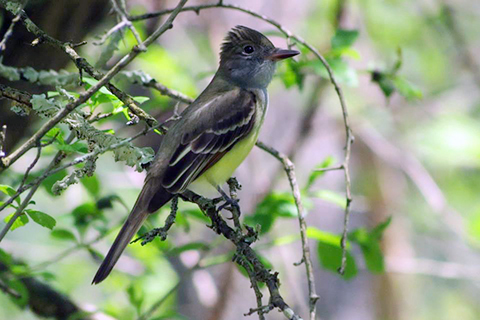By now, we know that pollinators are important for our food sources… but what about the role native pollinators play in native plant communities?
Guidelines for pollinator gardens always recommend native plants over non-native and hybrids -- and it now seems for good reason.
As it turns out, recent studies show that there are negative impacts to pollinators and native plants when non-native and invasive species grow nearby.
Invasive Plants Impact Pollinator Species

West Virginia White Butterfly on Toothwort (Photo and Banner By: Peter Woods)
Invasive plants can have a negative impact on certain pollinator populations.
One example is a relatively uncommon butterfly species in Pennsylvania, the West Virginia White butterfly (Pieris virginiensis), that uses native toothworts as its host plant.
Garlic mustard (Alliaria petiolata), an invasive plant that grows in the same habitat as the toothworts and is closely related, attracts the West Virginia White.
As the female chooses plants to lay its eggs, she can’t tell the difference between the two, and eggs are sometimes laid on garlic mustard.
The eggs laid on garlic mustard do not hatch, because the chemical compounds needed for development are not available -- resulting in reduced populations.
Invasive Plants Impact Pollinator’s Job

Garlic Mustard
Pollinators can be generalists, pollinating many different species, or specialists, designed to pollinate only one species.
When a pollinator sticks its head or body into a flower, it accomplishes two things -- it gets nectar for food and unintentionally, picks up pollen.
Some pollinators are physiologically adapted to do both things for specific plant species.
If they select a species of flower that they aren’t designed to pollinate, they may only get the nectar and not pick up pollen.
A flower not pollinated will not produce seeds or fruit, and therefore the chance of reproducing is reduced.
Over time, this could reduce the number of plants in a population.
Invasive Plants Impact Pollinator Ecosystems

Great-crested Flycatcher
In the ecosystem, pollinators have many roles, and other than pollinating, they are also nutritious bird food.
The number of insects found feeding on native plants is greater than the number found on invasive plants.
More insects as bird food means an increase in the number of baby birds, and that leads to healthier and larger bird populations.
A recent study showed non-native plant species compete for pollinator services.
When a native loosestrife species (Lythrum alatum), and the non-native invasive purple loosestrife (Lythrum salicaria) were planted together and observed for pollinator visitation, it was documented that the presence of purple loosestrife reduced pollinator visitation and seed set in the native loosestrife species.
Additionally, visitation to both species by the same pollinator could cause reduction in pollen quality and quantity in the native loosestrife.
This is one example of negative impact, but not necessarily applicable to all cases.
Both species grow in Pennsylvania and the native species is considered for endangered classification.
It is likely that, as more research is conducted, we will continue to reveal negative impacts that invasive plant species have on both pollinators and native plants communities.